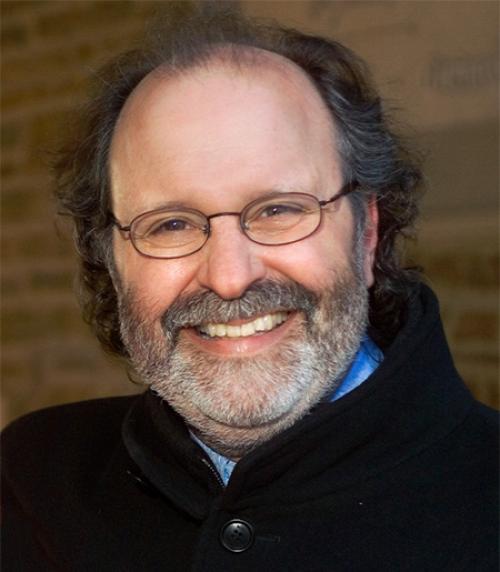"Sacred Trash"1
Imagine you are a humanist drawn to the study of the society and culture of a particular region in a specific historical era. A trove of nearly three hundred thousand folios and fragments is unexpectedly discovered, all originating from that place, time, and people. The cache of manuscript pages and pieces of personal correspondence, communal, legal, and commercial documents (as well as literary materials) unexpectedly renders accessible previously unknown details of quotidian life. The archive thus provides you with records that completely transform the prevailing picture of social and economic history, a picture derived entirely from historical, that is, constructed writings.
This enthralling discovery is the Cairo Geniza, a depository of texts written in Judeo-Arabic (Middle Arabic in Hebrew script), removed from circulation roughly from the ninth to the turn of the thirteenth century and stashed in a chamber of a synagogue in Fuṣṭāṭ (Old Cairo). Uncovered at the turn of the twentieth century the Cairo Geniza completely altered how we study and understand the socio-economic history of the Jewish and Islamic southern Mediterranean and Levant during the classical age of Islam. In its own way the Geniza is as significant as the Dead Sea Scrolls, a discovery that fundamentally changed the ways in which scholars study the religious and social history of late antique Roman Palestine. Over the last century scholars have sifted through, identified, deciphered, transcribed, categorized, cataloged, edited, analyzed, and synthesized the heaps of materials found in the Geniza. Especially noteworthy is the monumental effort and accomplishment of S.D. Goitein who undertook an historical “interpretive anthropology” of the “Geniza people” in five volumes inspired in part by the work of Clifford Geertz. Classification of the texts typically distinguishes between the “literary geniza” (canonical works and previously unknown texts) and the “documentary geniza” in that the private correspondence including autographs of renowned figures, and the legal, communal and economic records of the latter were audience-restricted communications: they were neither composed nor preserved with a wide or future readership in mind although personal letters were certainly informed by their own rhetorical norms and strategies. This documentary corpus of notes, reports, accounts, and lists provides scholars with astonishingly detailed and reliable information about the very stuff of daily life of various social classes: their food, clothing, housing, education, religious practices and beliefs, travel, economic activity and professions, circulation of books, family relationships including matters of gender, communal organization, offices, institutions and figures, and economic and social relations and socio-cultural intimacy between the Muslim majority and Jewish (and occasionally Christian) minority communities of Mediterranean lands under classical Islam.
For me, a cultural historian of the classical Judeo-Islamic age, engaging the Cairo Geniza represents nothing short of a jolt, a revelation, an opportunity and a challenge. The Geniza is a singularly rich yet complex, selective, and limited resource that posed significant methodological problems for how I would come to learn to re-read and re-interpret literary, historical and religious texts in light of the available documentary evidence of daily life. The Geniza affords me uncensored and unconstructed glimpses of the habits, customs, and practices of the individuals and society that were the producers and consumers of culture, that is, of literary, historical, and religious texts. The Geniza furthermore documents the relationship between economic power, religious authority, and preferred models of cultural production: it portrays the networks of Jewish mercantile elites whose trade spanned the entire realm from al-Andalus to India and their association with scientists, philosophers and theologians, religious scholars, poets and authors of imaginative prose whose research, thinking and writing they supported. Reinforcing as it were some developments in critically and historically minded cultural studies the Geniza archive thus requires that I never consider the literary isolated from the social and historical and that I never place undue emphasis on particular memories, records, events, textual genres or ways of reading them.
To put it another way, like archeological discoveries and art and architectural remains, the Geniza depicts aspects of the material and social world literary and religious intellectuals inhabited. It challenges me to consider the dialectical relationship between life as it was lived during the classical age of Islam with all its messy contradictions and how it is imagined and represented in literary, religious and historical texts with their own ambiguities and ambivalences. What could be more compelling than excavating the discourses, cracking the codes, and unlocking the puzzles of cultural expression with its inconsistencies and paradoxes from a millennium ago and reflecting on their meanings for the strange world we inhabit today?
1I borrow this inspired term from Adina Hoffman and Peter Cole, Sacred Trash: The Lost and Found World of the Cairo Geniza. New York: Nextbook-Schocken, 2011.
About the Transformative Humanities Project
Faculty in the College of Arts & Sciences share a belief in, and speak often with our students, their parents, and the broader public about, the importance of the humanities for shaping deep and meaningful human lives. These short reflections by our faculty illustrate — in concrete and personal ways — how encounters with the stuff of the humanities have in fact been transformative in their own lives. In composing these reflections faculty were responding to the following assignment: Pick a single work in the humanities that has profoundly affected you — that inspires you, haunts you, changed the way you think about things, convinced you to pursue your life’s work, redirected your life’s work . . . in short, a work that has made your life in some way deeper or more meaningful.
This reflection is one of the many thought-provoking and inspiring faculty contributions to the “Transformative Humanities” project, part of the College of Arts & Sciences’ New Century for the Humanities celebrations. Read more of them on our New Century for the Humanities page.




